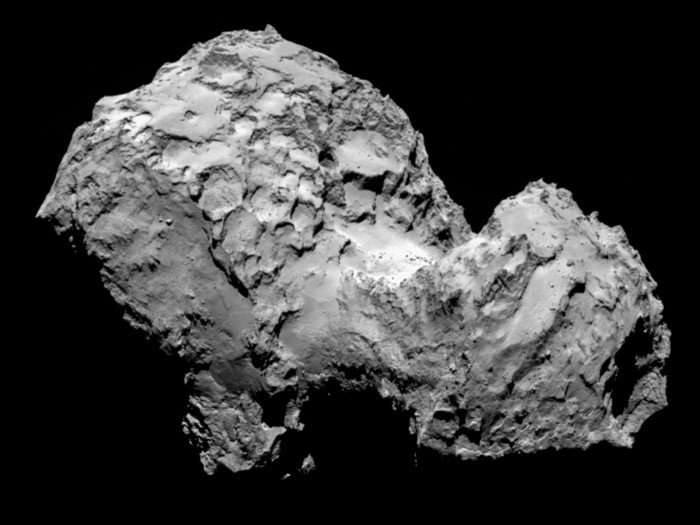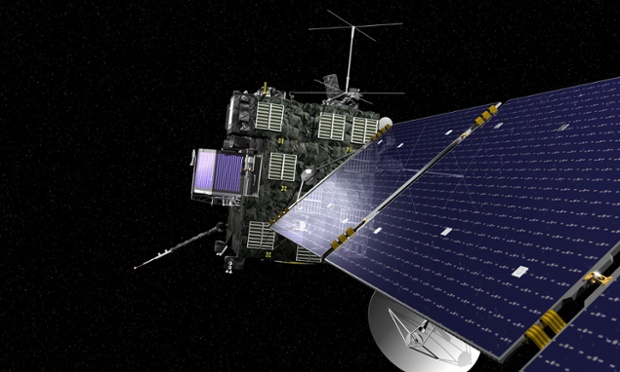This week saw a new achievement in our ongoing exploration of space: the European Space Agency has made history, because the Rosetta spacecraft they launched back in 2004 has become the first ever spaceship to rendezvous with a comet.

On August 6th, the Rosetta completed the last of its ten rendezvous processes with the comet, which have been going on since May of this year in order to match its speed and trajectory with the comet. The Rosetta is now only 100 kilometers from it’s surface. The Churyumov-Gerasimenko Comet (also known as Comet 67P) and the Rosetta are currently 405 million kilometers away from the Earth, moving about 55,000 kilometers per hour. The Comet’s orbit is 6.5 years long, from the furthest point of Jupiter to between Mars and our own orbit around the Sun. It took the Rosetta a very long time to reach, and the craft will stay with the Comet for at least a year of its orbit, as it moves around the sun and back towards Jupiter.
“After ten years, five months and four days travelling towards our destination, looping around the Sun five times and clocking up 6.4 billion kilometres, we are delighted to announce finally 'we are here',” says Jean-Jacques Dordain on Science Daily, the ESA's Director General. “Europe's Rosetta is now the first spacecraft in history to rendezvous with a comet, a major highlight in exploring our origins. Discoveries can start.”

Rosetta’s approach has given scientists the first clear view of the comet, which has “given us plenty to think about,” according to ESA Rosetta scientist Matt Taylor. Rosetta’s approach allowed them to see the shape of the comet with images taken by the OSIRIS camera in late April, which noted that the comet’s “coma,” or its surrounding haze of gas and dust, became brighter and brighter before dying down over a period of six weeks. Other measurements by MIRO (the Microwave Instrument for the Rosetta Orbiter) and VIRTIS (the Visible and Infrared Thermal Imaging Spectrometer) revealed that the comet seemed to be emitting water vapor, and that it’s average temperature was around -70°C. VIRTIS also indicated its surface would be dark and dusty as opposed to icy and cold.

Aside from the data it’s binging from Comet 67P, the Rosetta’s course—which included three fly-bys of Earth and one of Mars to assist with gravitational issues—also put it past the Steins and Lutetia asteroids, presenting scientists and researchers with exciting and unprecedented data to study.
Over the next couple of months, the project will look into how to complete yet another first in space history: how to go from orbiting a comet to actually landing on one. The ESA is currently researching landing sites on the comet, and expect to have as many as five identified by late August.
Source Science Daily
Advertisement





